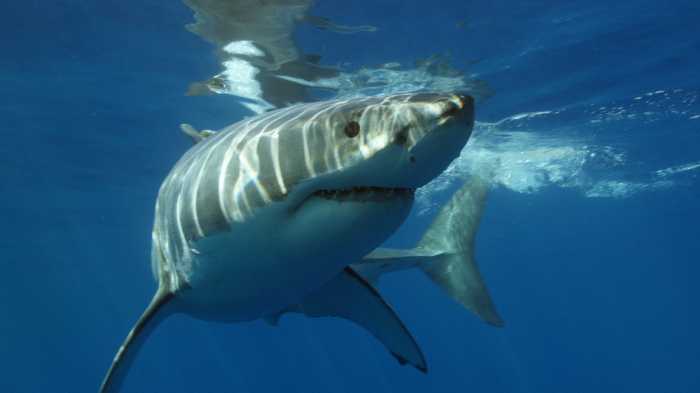Great White Shark vs. Megalodon: Key Differences Explained

Sharks are some of the most fascinating creatures in the sea. They are powerful predators that have been around for millions of years and come in all shapes and sizes. Two of the most popular sharks are the Great White Shark and the Megalodon. Although the two species appear to share many similarities, there are also several key differences between them. In this blog post, we will take a closer look at the Great White Shark and the Megalodon to see how they compare.
Great White Shark
The Great White Shark is one of the most well-known sharks in the world. It is also one of the largest predators in the sea, with some individuals reaching lengths of up to 20 feet (6 meters). Great White Sharks are found in all major oceans and prefer waters that are between 59°F and 75°F (15°C and 24°C). These sharks are apex predators, which means that they are at the top of the food chain. Great white sharks primarily eat fish, seals, and dolphins.
Megalodon
The Megalodon are extinct animals that is considered to be the largest shark that ever lived in the sea, so all that we can see of them today are their fossil specimens. Scientists believe that Megalodon sharks fed on large marine mammals such as whales. Megalodon means “big tooth” in Greek, and this name is very fitting because these sharks had teeth that were up to 7 inches (18 centimeters) long! Megalodon sharks could reach lengths of up to 60 feet (18 meters), which is twice as long as a Great White Shark. All their fossil teeth that measure at least 6 inches and larger, are extremely rare and are highly valued. These sharks lived in warm shallow tropical waters all over the world during the Miocene and Pliocene epochs (which lasted from 23 million to 2 million years ago).
Fossil remains of Megalodon are commonly found in coastal regions and riverbeds where they have been exposed by erosion. These fossils have also been discovered as far inland as desert regions and mountainous areas, indicating that Megalodon sharks once inhabited a wide range of environments. Some of the most famous fossil sites for Megalodon specimens include the Calvert Cliffs in Maryland, the Sharktooth Hill Bonebed in California, and the coastline of Peru.
Comparison of Differences
Now that we have taken a look at each type of shark individually, let’s compare them side-by-side to see how they stack up against each other.
– The Great White Shark is still alive today while the Megalodon is extinct.
– Great White Sharks can reach lengths of up to 20 feet (6 meters) while Megalodons could get as big as 60 feet (18 meters).
– Megalodon teeth that were up to 7 inches (18 centimeters) long while great white sharks have smaller teeth that only grow up to 3 inches (7.6 centimeters) long.
-Great White Shark’s Teeth tend to have a more triangular tooth shape than the Megalodon, which are more elongated and curved.
-Some studies have suggested that the Megalodon had a bite force of up to 20 tons, which would make it far stronger than that of a great white shark.
-Great White Sharks typically have finely serrated teeth that are designed for grasping and ripping food, while Megalodon teeth can be more jagged and uneven.
– Great White Sharks live in all major oceans while Megalodons lived in tropical waters during the Miocene and Pliocene epochs (which lasted from 23 million to 2 million years ago).
– Megalodons are thought to have fed on large marine mammals such as whales while great white sharks primarily eat fish, seals, and dolphins.



